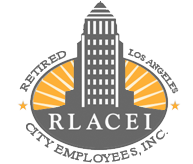
LACERS BOARD UPDATE
By Michael R. Wilkinson
LACERS/Legal Representative
Happy New Year! Okay, I’m a month late, but I still needed to pass that on. The New Year is a good time to look at one of the basics in deciding how to invest for the long term — active versus passive investing.
First: What are active and passive investing? Active investing is using a money manager to buy and sell individual stocks, bonds and other investments with the hope that the manager will find more superior investments that will do better than buying all of the investments in that investment class. Buying all of the investments is known as passive investing, such as in an index fund like the Standard and Poor’s 500 Index.
At first blush, this seems like a trick question. Of course you would want to go with a winning active manager since that manager always promises to beat the pants off the index. Why go with an index fund that promises just a boring “C” when you can get a nice shiny “A”? Why would smart investors like Warren Buffet and John Bogle, known as the father of index funds, encourage investors to join others to become part of the $13.4 trillion invested in index funds? The answer is that it works, and frequently that “C” for the index fund is an “A” over the long term of investment cycles.
For many asset classes, the power of extremely low investing costs, plus the difficultly of active managers to consistently pick winning investments and avoiding expensive losers, makes passive investing a long-term winner. Just looking at one study of large U.S. companies (represented by the S&P 500), the index beat active managers a whopping 89 percent of the time over a five-year period ending Sept. 30, 2018.
While passive investing works for some asset classes, for some others active management has proven a better choice. LACERS total fund is 39 percent passive investments and 61 percent active. The LACERS U.S. equity investment is 87 percent passive and only 13 percent active. The non-U.S. equity portion is 33 percent passive and 67 percent active.
For some types of investments there are no passive managers, and for others active managers have a track record of consistently topping passive management. For those situations, LACERS has stayed with active management. However, I have pushed our outside investment consultant and our investment staff to be constantly on the lookout for new asset classes to move from active to passive investing. The reason is clear: The burden of higher fees can be an impossible burden on active managers to beat index managers in those asset classes that have successful index funds.











